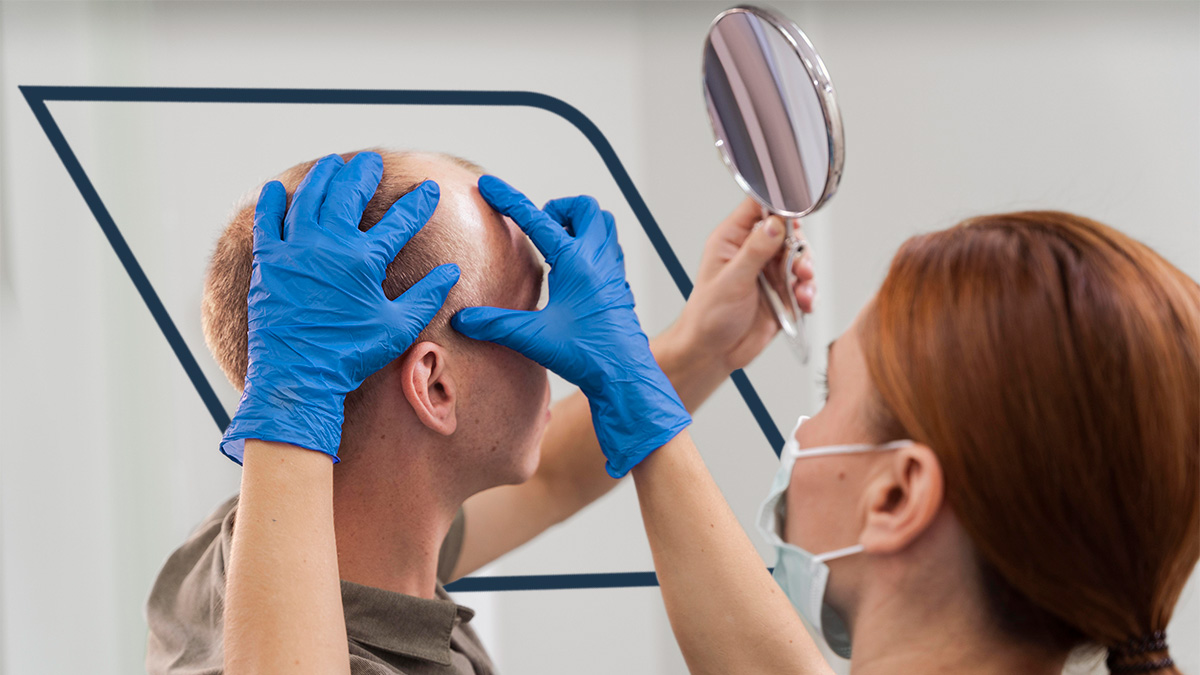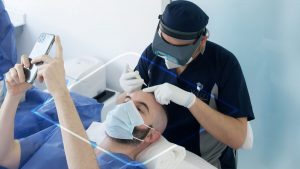Hair loss in men is a common phenomenon, often beginning in the late 20s or early 30s. The concept of Hair Transplant 30s specifically addresses the unique medical, aesthetic, and psychological considerations for men undergoing hair restoration in this age group. Unlike older patients, men in their 30s face different patterns of hair loss, expectations, and long-term planning needs, making age-targeted guidance essential.
Why Age Matters in Hair Transplantation
Male pattern baldness, or androgenetic alopecia, progresses with age but can present variably in men during their 30s. Clinical data suggest that early intervention with hair transplantation can preserve hairline integrity and reduce future corrective procedures. However, younger patients require careful assessment to avoid over-harvesting donor follicles and to plan for natural progression over decades.
Pattern and Progression of Hair Loss in the 30s
The Norwood-Hamilton classification is commonly used to categorize male pattern baldness. Men in their 30s frequently present with:
- Early vertex thinning (Norwood III vertex)
- Receding frontal hairline
- Mild diffuse thinning on the crown
Early intervention through Hair Transplant 30s aims to restore density while maintaining a natural hairline, considering that hair loss may continue progressively. Surgeons often recommend combining transplantation with medical therapies such as finasteride or minoxidil to optimize long-term results.
Techniques and Innovations
Modern hair restoration relies predominantly on Follicular Unit Extraction (FUE) and Follicular Unit Transplantation (FUT).
Follicular Unit Extraction (FUE):
- Ideal for men in their 30s due to minimal scarring and precise follicle placement.
- Individual follicular units are harvested from the donor area and implanted to match natural hairline angles.
- Advantages include faster recovery and flexibility for future procedures.
Follicular Unit Transplantation (FUT):
- Suitable for patients requiring larger graft volumes in a single session.
- Involves strip harvesting from the donor area, which may result in linear scarring but provides higher graft yield.
Age-Specific Considerations
In men in their 30s, careful planning is critical:
- Avoid overly aggressive hairline lowering to prevent unnatural appearance as hair loss progresses.
- Maintain donor area integrity to allow for potential future sessions.
- Consider lifestyle factors such as stress, nutrition, and hair care habits that can influence graft survival and growth.
Preoperative Assessment
A comprehensive preoperative evaluation is essential for men pursuing Hair Transplant 30s:
- Medical History: Screening for underlying conditions that may accelerate hair loss (thyroid disorders, autoimmune disease).
- Hair and Scalp Analysis: Evaluating donor density, hair caliber, and scalp elasticity.
- Photographic Documentation: Establishing baseline images for surgical planning and outcome comparison.
- Patient Expectations: Discussing realistic results, timelines, and potential need for adjunct medical therapy.
Surgical Procedure Overview
The transplant procedure is typically performed under local anesthesia, with the following steps:
- Donor Harvesting: FUE or FUT techniques are used to extract healthy follicles.
- Graft Preparation: Follicular units are carefully dissected, preserving integrity and viability.
- Recipient Site Design: Hairline and density are customized based on age-specific facial proportions.
- Implantation: Follicles are placed at precise angles to emulate natural hair growth direction.
Recovery and Timeline
- Initial shedding occurs within 2–4 weeks.
- Early regrowth visible at 3–4 months.
- Full density and final results typically achieved by 12–18 months.
- Postoperative care involves gentle scalp washing, avoiding trauma, and adherence to prescribed medications.
Risks and Complications
Even in younger patients, hair transplantation carries potential risks:
- Folliculitis or localized inflammation
- Uneven growth or misaligned follicles
- Temporary shock loss in surrounding areas
- Scarring at donor sites (minimal with FUE)
Proper surgical technique, patient compliance, and realistic expectations mitigate most complications.
Psychological and Social Implications
Hair loss in the 30s can significantly impact self-esteem and social interactions. Studies published in the Journal of Cosmetic Dermatology suggest that men undergoing hair transplantation report improved confidence and reduced social anxiety. Addressing psychological readiness is a crucial part of preoperative counseling.
Cost Considerations
Hair transplant costs vary depending on technique, graft quantity, and geographic location. Men in their 30s typically require 1,500–3,500 grafts for effective coverage, with prices in the United States ranging from $4,000 to $15,000. FUE procedures are usually higher due to precision and labor intensity. Long-term planning should factor in potential follow-up sessions.
Comparative Table: 30s vs Older Patients
| Feature | Men in 30s | Men 40+ |
|---|---|---|
| Hair Loss Progression | Early, potentially unstable | More stabilized |
| Donor Hair Availability | Higher, robust | Moderate, may decrease |
| Risk of Over-Harvesting | Significant concern | Lower concern |
| Long-Term Planning | Critical for decades | Less critical |
| Psychological Impact | High | Moderate |
This table highlights why age-targeted strategies are essential for effective hair restoration.
Advanced Techniques and Adjunct Therapies
- PRP Therapy: Platelet-rich plasma can enhance graft survival and stimulate dormant follicles.
- Robotic-Assisted FUE: Improves precision, reduces transection rates, and shortens procedure time.
- Combination Therapy: Using medications like finasteride alongside transplantation maximizes long-term results.
Can hair transplantation in my 30s prevent future hair loss?
While transplantation restores existing hair and improves density, it does not halt the natural progression of male pattern baldness.
Combining transplantation with medical therapies and lifestyle adjustments can help maintain results.
Future directions in hair transplantation
Emerging research explores stem-cell therapy, bioengineered follicles, and genetic interventions to improve graft longevity and hair growth predictability. Men in their 30s may particularly benefit from these innovations due to their longer anticipated timeline of hair loss progression.
The concept of Hair Transplant 30s addresses the unique challenges and opportunities faced by men in their third decade. Early intervention, age-specific planning, and the integration of surgical and medical therapies optimize outcomes and reduce the need for corrective procedures.
Men considering hair restoration in their 30s should:
- Consult experienced, board-certified surgeons
- Evaluate donor hair quality and growth patterns
- Discuss long-term planning and adjunct therapies
- Maintain realistic expectations regarding density and aesthetics
By understanding these age-specific factors, patients can make informed decisions and achieve natural, lasting results.
A Hair Transplant 30s strategy provides early, effective intervention for men experiencing hair loss in their third decade. Combining surgical precision, medical therapy, and age-specific planning ensures optimal aesthetic and psychological outcomes. Explore further topics on scalp-to-beard transplantation, advanced FUE techniques, and long-term hair preservation strategies for men in their 30s.







